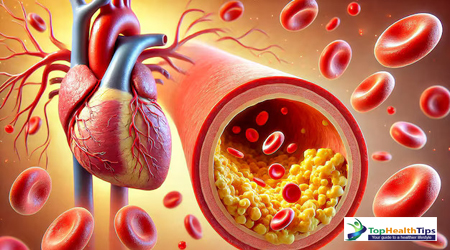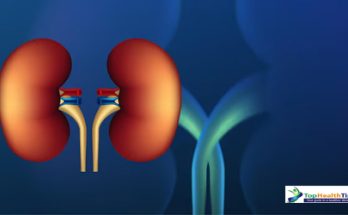Atherosclerosis is a condition that develops quietly, often going unnoticed until it leads to more severe health problems like heart attacks or strokes. Understanding how this condition works and what can be done to prevent it is key to maintaining long-term cardiovascular health. Let’s explore the science behind atherosclerosis, its causes, symptoms, and ways to prevent or manage this condition.
What is Atherosclerosis?
Atherosclerosis is the hardening and narrowing of the arteries due to the buildup of plaque—composed of cholesterol, fat, calcium, and other substances—in the artery walls. Over time, this plaque can grow, leading to restricted blood flow and increasing the risk of cardiovascular complications.
How Does Atherosclerosis Develop?
The development of atherosclerosis begins with damage to the inner layer of the artery, called the endothelium. This damage can be caused by several factors:
- High blood pressure
- High cholesterol levels
- Smoking
- Diabetes
- Inflammation from conditions like arthritis
Once the endothelium is damaged, cholesterol and other fatty substances begin to accumulate in the artery wall, forming plaques. Over time, these plaques can harden or rupture, leading to serious health issues.

Symptoms of Atherosclerosis
One of the challenges in diagnosing atherosclerosis early is that it often presents no symptoms until a blockage has occurred. When symptoms do appear, they depend on which arteries are affected:
- Coronary Arteries: Chest pain or angina
- Carotid Arteries: Numbness, weakness, or stroke-like symptoms
- Peripheral Arteries: Leg pain while walking (claudication)
- Renal Arteries: High blood pressure or kidney dysfunction
The Science Behind Atherosclerosis
At the core of atherosclerosis is inflammation. When artery walls become damaged, the body’s immune response triggers inflammation, which further contributes to plaque formation. This chronic inflammation makes the artery walls more susceptible to further damage, creating a vicious cycle. In advanced stages, plaques can calcify, making the arteries stiff and less flexible, which further restricts blood flow.
When a plaque ruptures, blood clots form around the rupture, further narrowing or completely blocking the artery. This can lead to heart attacks, strokes, or even death.

Risk Factors
While some risk factors for atherosclerosis, such as age and genetics, cannot be controlled, many lifestyle-related factors can be managed:
- Unhealthy Diet: Diets high in saturated fats, trans fats, and cholesterol can contribute to plaque formation.
- Lack of Physical Activity: Regular exercise helps keep arteries flexible and reduces cholesterol levels.
- Smoking: Chemicals in tobacco damage the endothelium, accelerate plaque buildup, and increase inflammation.
- Obesity: Excess body fat is linked to higher cholesterol and triglyceride levels, contributing to atherosclerosis.
- High Blood Pressure: Elevated pressure against artery walls can weaken them and promote plaque buildup.



Prevention and Management
Preventing atherosclerosis involves making lifestyle changes that reduce risk factors and improve heart health. Here’s what you can do:
- Adopt a Heart-Healthy Diet
- Focus on whole grains, lean proteins, and healthy fats.
- Include plenty of fruits and vegetables.
- Reduce intake of saturated and trans fats.
- Limit sodium to keep blood pressure in check.
- Exercise Regularly
- Aim for at least 150 minutes of moderate-intensity exercise per week.
- Include activities like walking, cycling, and swimming.
- Strength training twice a week can also help.
- Quit Smoking
- Stopping smoking not only improves heart health but also reduces overall inflammation.
- Manage Stress
- Chronic stress can contribute to high blood pressure and inflammation.
- Practice relaxation techniques like meditation, deep breathing, or yoga.
- Regular Medical Checkups
- Monitor blood pressure, cholesterol levels, and blood sugar regularly.
- Take medications as prescribed if you have high cholesterol or diabetes.
Treatments for Atherosclerosis
If lifestyle changes aren’t enough to control atherosclerosis, medical treatment options are available:
- Medications: Statins are commonly prescribed to lower cholesterol levels. Other medications might include blood pressure-lowering drugs and antiplatelet agents to prevent blood clots.
- Angioplasty: This minimally invasive procedure involves inserting a balloon catheter to widen narrowed arteries.
- Bypass Surgery: In severe cases, a surgeon may create a bypass around the blocked artery to restore blood flow.
Importance of Early Detection
Early detection of atherosclerosis can prevent more serious complications like heart attacks or strokes. Regular health checkups, including cholesterol and blood pressure tests, can help catch the condition before it becomes life-threatening. Screening methods such as coronary artery calcium (CAC) scoring and carotid ultrasound can provide valuable insights into your cardiovascular health.
Interactive Element: Assess Your Risk
Here’s a quick self-assessment to evaluate your risk for atherosclerosis:
- Do you have a family history of heart disease or stroke?
- Are you over 50 years of age?
- Do you smoke or have a history of smoking?
- Are your cholesterol or blood pressure levels high?
- Do you lead a sedentary lifestyle?
- Do you have diabetes?
If you answered “yes” to any of these questions, it may be worth discussing your cardiovascular health with a doctor.
Conclusion
Atherosclerosis is a silent but dangerous condition that can lead to serious health issues if left unchecked. By understanding the causes and symptoms of atherosclerosis, you can take proactive steps to reduce your risk and manage your heart health. Through lifestyle changes, regular checkups, and proper medical care, atherosclerosis can be controlled, improving both quality of life and longevity.
By following a well-structured lifestyle and staying informed, you can help prevent atherosclerosis from becoming a significant health threat.
Related post for Disease & Remedy>>>
References:
- Libby P. Inflammation in atherosclerosis. Nature. 2002;420(6917):868-874. doi:10.1038/nature01323.
- Roth GA, Johnson C, Abajobir A, et al. Global, Regional, and National Burden of Cardiovascular Diseases. JAMA Cardiol. 2017;2(4):375-381. doi:10.1001/jamacardio.2017.0079.
- Lusis AJ. Atherosclerosis. Nature. 2000;407(6801):233-241. doi:10.1038/35025203.
- Roger VL, Go AS, Lloyd-Jones DM, et al. Heart Disease and Stroke Statistics–2012 Update. Circulation. 2012;125(1). doi:10.1161/CIR.0b013e31823ac046.
- Blankenhorn DH, Azen SP, Kramsch DM, et al. Coronary Artery Disease. JAMA. 1994;271(10):835-842. doi:10.1001/jama.1994.03510340057035.




